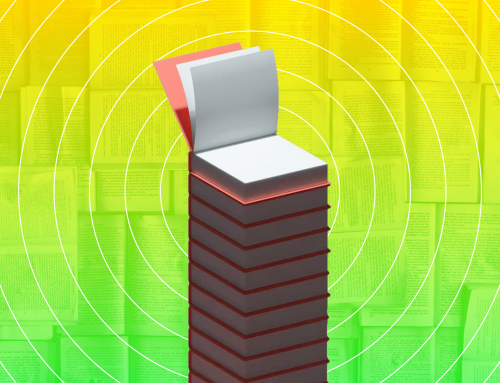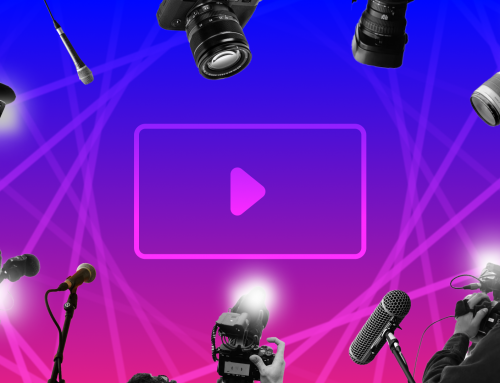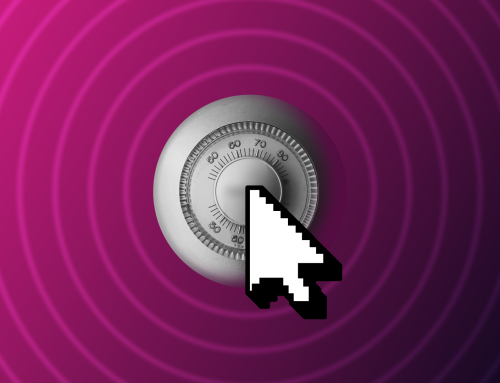The Blue Whale story
On the evening of May 14, 2017, Italian television show Le Iene broadcast a long television report entitled “Blue Whale, committing suicide for fun”. In the video, “hyena” Matteo Viviani walks along a street, points to a building and starts telling a story: “We are in Livorno. That over there is the tallest building in the whole city. Early in the morning on February 4th, a 15-year-old boy got in, climbed to the top of the twenty-sixth floor and committed suicide”. Behind that “absurd gesture”, he says something “even more monstrous” is hidden. “To tell the whole story properly”, Viviani explains, it’s necessary to start from Russia, where “in recent years hundreds of teenagers have committed suicide by throwing themselves off buildings”. As amateur videos of people jumping into the void from different buildings flash by on the screen, accompanied by distressing music, he underlines that “the most disturbing thing is that as they jump off the buildings, they let themselves be filmed” by other kids, who “were there on purpose, following a very specific plan”. In all these cases, the kids were supposed to be “following the rules of a macabre game”, called Blue Whale.
The story of a challenge called Blue Whale, described as a dangerous online game that leads to suicide after a series of tests was not, however, exclusive to Le Iene. For several months, since the beginning of 2017, the Italian media published articles sounding the alarm on the Blue Whale, a “horror challenge” – as one title framed it – that had apparently led to the death of over a hundred teenagers in Russia as well as other European countries.
The Blue Whale story was just the latest example of the Italian media discussing dangerous online challenges with sensationalistic tones: in 2015, for instance, newspaper Il Giornale titled “The latest online madness: sprinkle yourself with alcohol and then set yourself on fire”. In 2016, Il Tempo ran the headline: “Choking until you faint. A new online game scares families”. The challenges were different, but they were all described as part of a dynamic involving young people online that was potentially out of control. This media narrative, though, really exploded in Italy with Le Iene’s report on Blue Whale, leading to negative consequences that will be illustrated later.
Let’s start from the origins of this “macabre game”. To be fair, the story behind it is not yet completely clear, but it looks like real elements were soon added to invented details. The story appears to have originated in Russia, after a girl called Rina Palenkova committed suicide in 2015. She had posted a selfie on Russian social network VKontakte with the caption “Goodbye” the previous day – the photo later became a meme. An in-depth analysis by the BBC reports that her death obtained morbid attention on VK groups populated by teenaers, giving rise over time to fals stories and fabrications about her suicide. Rina’s story was thus merged with other cases of teenage suicide. These groups were soon filled with suicide posts, drawings of Rina Palenkova and mentions of blue whales.
But how did this story conquer newspapers around the world? We asked Andrea Angiolino, a game expert and television author who has dealt extensively with Blue Whale and the fallacies surrounding the story:
Then, in May 2016, Russian independent magazine Novaya Gazeta published an article about the presence of thousands of groups on Russian social network VK, where teenagers were led to suicide through a series of tests introduced by anonymous adults who used psychological manipulation techniques. Parents, the article said, were completely unaware. According to the article, most of the “130 suicides recorded between November 2015 and April 2016” in Russia were linked to these online groups. The article published in Novaya Gazeta was mainly based on the testimonies of some mothers of adolescents who committed suicide in a short time span.
But what exactly does the challenge known as Blue Whale consist of? We asked Angiolino:
The article sparked panic and alarm in Russia. Russia Today wrote that relevant authorities were investigating the information contained in the investigation and had already closed many of the VK groups containing materials relating to suicide. However, RT also pointed out that the article had received a lot of criticism from journalists and experts in teenage suicides. According to them, the story was partial and the author had not provided any evidence proving a link between the groups and suicides. Russian site Meduza also pointed out that Novaya Gazeta had not properly analyzed the problem of youth suicides in Russia, extrapolating data and not relying on any official and verified source.
Similar dynamics occurred in Italy after the Le Iene report aired. The Le Iene correspondent also based his report on interviews with some parents of Russian children who had previously committed suicide by jumping off buildings, collecting testimonies that seemed to validate the hypothesis of an ongoing challenge. According to two mothers, the daughters’ friends knew what was about to happen because it was a challenge to “level up” the game they were all involved in, but no one had said anything. Not telling anyone about the challenge you were taking part of was supposedly one of the rules Blue Whale participants had to follow. According to Viviani’s report, participants were provided with a list of tests to be completed, detailing actions that had to be followed during “the game”, including performing and photographing acts of self-injury. The list was allegedly sent to participants by people called “curators”. “Curators” would therefore lure curious teenagers into the game by sending them “satanic videos, footage of murders and, above all, many suicides”.
Le Iene said that the Blue Whale challenge originated in Russia but had spread to other countries, including Italy. This is where the report comes back to where it started: Livorno. According to Le Iene’s report, the death of a 15-year-old by suicide in Livorno could have been linked to the Blue Whale. The claim was supported by one of the victim’s classmates, who has been suspicious about some of his friend’s behaviours.
After the report aired, public attention on this challenge suddenly grew and the Italian media covered dozens of cases of self-harm practices that could be attributed to Blue Whale. At the time, the Postal Police underlined how trumpeting this challenge in the media was increasing risks of emulation. As the news went viral, Viviani’s reportage received various criticisms that focused on the veracity of the contents presented and problematized the way the story was told.
Something doesn’t add up
Initial criticism of what Novaya Gazeta had written turned into real doubts about the veracity of the news, and the possibility that the suicides were not directly connected to a challenge started circulating. The alleged solidity of the now viral and international Blue Whale affair has since wavered and, thanks to a journalistic approach based on facts and on the verification of information, errors and oversights have been unmasked, considerably resizing the phenomenon and highlighting its falsehoods. But let’s start with the publication that first set off an alarm bell: Radio Free Europe / Radio Liberty (RFE / RL).
On February 21, 2o17, RFE/RL published an article by Sergei Khazov-Cassia titled “Teen ‘Suicide Games’ Send Shudders Through Russian-Speaking World”. The article briefly reviewed what was known about the story at the time: according to an investigation published by Novaya Gazeta, groups of teenagers committed suicide in Russia because they were pushed to do so by an online challenge known as Blue Whale. However, Khazov-Cassia clarifies from the very first lines that, even if the Russian media referred to a causal link between challenge and suicide, actually “no single suicide in Russia or Central Asia has been definitively linked to Blue Whale”. In support of what he writes, Khazov-Cassia brought evidence: he contacted the relatives of the victims and asked them for confirmation of what was told by the press, not always finding correspondence.
He then decides to investigate the functioning of the groups on Vk and to verify firsthand the actual presence of the challenge, creating an account and contacting some of the alleged curators. One of them, in explaining the rules, says that it is necessary “to complete every challenge diligently” and that “nobody should know anything. Once you have completed the assignment, you must send me a photograph. At the end of the game, you will die. Are you ready?”. The curator warned that there is no possibility of going back, since the game cannot be abandoned once it has begun.
What then happens to the editorial staff of RFE/RL provides some clues to the veracity of the Blue Whale affair: some curators stop replying after a few days, others have their accounts blocked. There’s more: the alleged obligation to complete all the tests and the inability to leave the game are not confirmed either online or in offline life. To prove this, Khazov-Cassia not only experienced the interruption of the game firsthand, but also brought the testimony of a player who, after interrupting participation and receiving a threatening message from his curator, declared he had not had any news of the game or feedback in real life.
RFE/RL is not the only journalistic reality that wants to know more: on May 17, 2016 the online newspaper lenta.ru publishes an investigation sharing their discoveries: “behind the scenes”, Blue Whale was made up of very young people who had created a whole network of social groups starting in mid-2015, sharing imagines and videos (some real, some modified or simulated) of self-harm and using the symbology of whales and butterflies. Why? Their answers were varied: from having many subscribers to entice advertisers and earn money to identifying and helping struggling teenagers.
Did the “death groups” really exist, then? Angiolino replies.
But that’s not all: the RFE / RL article also questions (and re-contextualizes) the data reported by Novaya Gazeta about the number of suicides. Novaya Gazeta had spoken of “130” suicides between “November 2015 and April 2016”, but it had not contextualised the data. After the first controversies, the newspaper had stated that the calculation did not come from an official source, but was based on a group of parents disappointed by how the authorities had investigated the death of their children and who had decided to investigate independently. However, the number needs to be put in the correct context, since it comes from a country, Russia, with a high suicide rate. According to United Nations data, Russia was third in the world for suicides among teenagers in 2013 – a value more than three times higher than the world average, without taking into account cases of attempted suicide or death not classified as suicide. In his article for RFE/RL, Khazov-Cassia tried to contextualize the alleged “130” suicides associated with Blue Whale by writing that “according to the Russian government, 720 minors committed suicide in 2016”. “The authorities stated that the main reasons were unrequited love, family and mental health problems”, he added: “only 0.6 per cent have a connection to the Internet or social media”. The reasons are confirmed in the aforementioned United Nations data, which also mentioned the same causes for 2o12. Further studies showed that the Internet and social networks alone do not play a leading role in leading to suicide, but can negatively impact already vulnerable individuals.
In summary, the RFE/ RL investigation showed that there are no official confirmations linking suicides to the Blue Whale challenge, that in several cases there had been no repercussions for halting the game, that the number of suicides had come from unofficials sources and that the article lacked context that was necessary to correctly understand the phenomenon. In May 2016, the investigation into the Blue Whale case led to the arrest of one of the curators, Philipp Budeykin, aka “Philip Liss” and to the conviction of incitement to suicide in two episodes. Later, an investigation by the Russian authorities showed that the influence of “death groups” on suicides was actually minimal, contrary to what the press reported. After this episode, the country passed a law allowing online groups that instigate suicide to be blocked. The penalties for instigating suicide were also increased (from 8 to 15 years in prison).
But what happened in the rest of the world and, above all, in Italy?
Errors and inaccuracies in Le Iene
In the days following the broadcasting of the Le Iene report, Google searches showed a clear growth of interest towards Blue Whale by Italian users, including the creation of dedicated profiles on Twitter and specific hashtags. Just like in Russia, this fostered concern for a phenomenon that the press erroneously described as certain and widespread in Italy, even if several details in the Le Iene report did not add up.
The first inconsistency appears at the start of the video, when Viviani talks about a suicide case linked to Blue Whale that would have happened “on February 4, 2017”, involving a 15-year-old boy from Livorno. In reality, the case dated back to March 6th and no connection to the Blue Whale challenge was demonstrated. Investigators also denied any link.
Furthermore, the amateur videos broadcast by Le Iene to support the claim that Blue Whale was a serious phenomenon leading to the suicide of “hundreds of teenagers” recording each other in Russia had actually been decontextualised. As blogger Andrea Rossi noticed, one of the videos was shot in China. Another came from Ukraine, and the caption said the suicide was motivated by love and the video had been taken by an adult, with other adults and the police on the spot. The next video was shot in Russia, but it showed the suicide of a couple of drug addicts, while the last video that was meant to show “two teenagers who decided to kill each other” is actually a macabre simulation.
It’s not over: the report then continued with an interview with three parents and ended with the intervention of Sergej Pestov, presented as the father of a victim. Pestov speaks of “157 victims”, a number that Viviani assumes is correct: in reality, as explained above, there is no official confirmation about the number of suicides directly linked to the Blue Whale challenge, neither in Russia nor elsewhere.
The Le Iene video and the subsequent journalistic broadcasts that were aired didn’t only contribute to spreading disinformation at the editing stage: they also used a sensationalistic tone. As Angiolino explains:
Therefore, both in Italy and abroad, incorrect information on the Blue Whale affair and incorrect narrative choices made by those who told the story led to dangerous consequences. These choices went on to directly touch the life and concern of young people, families and experts, unleashing a so-called “moral panic” around the theme. The expression indicates a form of collective and unjustified panic about an issue that is considered by many to be a threat or a danger, while its real scope is actually minimal. A key role is played by the media, and by the choices it makes when covering social issues.
Moral panic is not a recent phenomenon, nor is it necessarily associated with the Internet and new technologies: it has contributed to some historical episodes such as cases of witch hunts or persecution of Jews. As reconstructed by Stanley Cohen in Folk Devils and Moral Panics, moral panic also fueled urban legends and prejudices around Mods and Rockers, youth subcultures of the London working class that were depicted as deviants. A similar case happened in the United States with the murderous clowns myth. Today, single events related to terrorism or immigration risk disrupting the normal routine of the media, provoking an obsessive interest in a given the event and the risk of an unjustified collective panic.
The Blue Whale case falls perfectly in the category of media “victims”: its mediatic success, and the fears and possible imitative phenomena it spawned, depended directly on the way the news was told and reported.
Risks of emulation
Moral panic and the uncontrolled spread of urban legends, however, are only some of the potentially problematic aspects of a superficial and sensationalist media coverage of social challenges – and probably the most harmless. The concrete danger is that of favoring the so-called “Werther effect“, an emulative dynamic theorized for the first time in 1974 by sociologist David Phillips, according to which the publication by mass media of a suicide case would be able to generate a streak of further suicides.
The phenomenon owes its name to the epistolary novel “The sorrows of young Werther”, published in 1774 by Johann Wolfgang Goethe. The novel ends with the suicide of the protagonist, who is in love with a woman who, despite seemingly reciprocating his feelings, ends up marrying a other man. Legend has it that the publication of the book generated a long series of emulative phenomena at the time, so much so as to force Goethe to slightly change the ending, adding a warning reading “Be a man and do not follow my example” in a 1775 reprint. As explained by sociologist Frank Furedi in a 2015 essay dedicated to the “first case of moral panic”, however, the suicide epidemic following the publication of the novel was not all that relevant and, even in that case, it was a matter magnified by mass media.
Beyond the historical fact itself, the sociological phenomenon known as the “Werther effect” has been repeatedly confirmed over time, leading to the theorization of an equal and opposite effect (“Papageno effect“, from the character with suicidal will, which appears in Mozart’s Magic Flute, saved in its intent by the intervention of three young people) which instead highlights the containing power of the media in the dynamics of self-harm. The theory of imitative suicides fueled by media coverage has long been studied in academic circles and, as we will see in the fifth chapter, has had direct repercussions on journalistic ethics and on the rules adopted in newsrooms around the world.
Most of the studies on the subject are based on the theory of social learning and the idea that a vulnerable adolescent may end up identifying himself excessively in the victim of a suicide, identifying the possibility of choosing their own destiny. Over the years, the theory has been corroborated by the numerous experimental evidence collected in studies dedicated to the topic. Those carried out by Dr. Madelyn Gould of Columbia University in New York are particularly relevant. Among the best known cases of the “Werther effect” – or copycat suicide, “photocopy suicides”, as they will later be renamed – David Phillips reported that the suicide of Marilyn Monroe was followed by an excess in suicides equal to 363 units between the U.S. and the United Kingdom, compared to the average population. The same label has also been applied over the years to the consequences of famous deaths such as that of the German goalkeeper Robert Enke in 2009 and the American actor Robin Williams in 2014.
Another fact is worth adding: at the end of 2019, suicide was the second cause of death among American adolescents in the 15-19 age range (data provided by the CDC, the American centers for prevention and disease control), preceded only by deaths caused by accidental injuries. Very similar statistics also emerged at the European level: according to a recent report published by Unicef, 1,200 children and teenagers between 10 and 19 years of age put an end to their lives every year. It’s the second cause of death in this age range in this case too.
In short, the excessive media exposure of a suicide has direct and verifiable repercussions on the possibility of further suicides and the public most exposed to this dynamic is inevitably the one made up of adolescents. A correlation that intensifies the more that exposure becomes detailed and unnecessarily sensationalistic.
This brings us directly to May 21, 2017, the day in which the Blue Whale case made a strong comeback in the Italian news, this time for a real story. The protagonist is an 11-year-old boy from Sarno (Salerno) who, around 9.45pm, tried to get on the roof of a theater, expressing his intention to jump, just as specified by the last rule of the Blue Whale – the one that invited people to “jump from a high building” to “get your life back”. The child was rescued by some friends. Family members will later explain that “he just pretended he started a game he had never actually started” after hearing about it on TV.
The emulative phenomena do not concern only the possible victims, but also the potential executioners. This is the case of the 23-year-old girl who in October 2018 was arrested on suspicion of instigating a 12-year-old girl to commit suicide, posing as a curator of the Blue Whale game and causing her to inflict cuts on her body as part of the challenge. In 2021 the girl, now 25, was sentenced by the Court of Milan to serve a year and a half in prison: the judicial investigation conducted by Milan prosecutor Barilli did not find any real connection with the alleged organizations outlined by the Le Iene service, but only an emulative episode fueled by the media hype.
The judgement, pronounced by the judge of Milan Martone, spoke of a phenomenon that “does not seem to have the characteristics of an actually existing stable association of people, but rather seems to pose as a spontaneous social phenomenon developed by emulation”. As in an ugly self-fulfilling prophecy, the Blue Whale case finally became reality: it happened due to superficial and sensationalist media coverage, exploited the echo of the moral panic generated in the public opinion, and ended up leveraging the weaknesses of deeply vulnerable people. It is just a coincidence that that combination of fear and misinformation has not produced any casualties to date.
Today what happened to the media case that broke out in 2016 around Blue Whale and its attempts at emulation? Let’s take stock of the situation with Andrea Angiolino:







